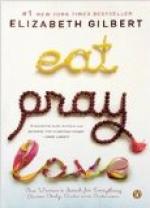They entered the cave. On the left were two full columns, not yet crumbled away as others were, which gave the observers a complete view of what a vast number of others there were. Next beyond them were three pilasters clinging to the ceiling. This part of the cavern was in the light from the entrance; but farther along, considerably obscured in the darkness of the subterranean temple, were scores, and perhaps hundreds, of others. The pillars were not the graceful forms of modern times, and many of them had lost all shape.
This temple is said to have been excavated in the ninth century. The walls are covered with gigantic figures in relief. The temple is in the form of a cross, the main hall being a hundred and forty-four feet in depth. The ceiling is supported by twenty-six columns and eighteen pilasters, sixteen to eighteen feet high. They look clumsy, but they have to bear up the enormous weight of the hill of rock, and many of them have crumbled away.
At the end of the colonnade is a gigantic bust, representing a Hindu divinity with three heads. Some say that this is Brahma, as the three symbols of the creator, preserver, and destroyer, forming what is sometimes named the Hindu trinity. But the best informed claim that the figure represents Siva, the destroyer of the triad of gods. All the reliefs on the walls relate to the worship of this divinity, while there is not a known temple to Brahma.
The principal piece of sculpture is the marriage of Siva to the goddess Parvati; and it is identified as such, wholly or in part, because the woman stands on the right of the man, as no female is permitted to do except at the marriage ceremony. The party wandered through the caverns for two hours, and Sayad and Moro, the only servants brought with them, kindled fires in the darker places, to enable them to see the sculpture. Sir Modava explained what needed explanation. He conducted them to an opening, lighted by a hole in the hill, where they found a staircase guarded by two lions, leading into what is called the Lions’ Cave.
The tourists at the end of the two hours were willing to vote that they had seen enough of the caverns, and they returned to the hotel in season for dinner. On his arrival Lord Tremlyn found a letter at the office. On opening it, the missive proved to be an invitation for that evening to a wedding for the whole party. They considered it for some time, and as it afforded them an opportunity to see something of native life it was decided to accept it.
CHAPTER XX
A JUVENILE WEDDING AND HINDU THEATRICALS
The note to Lord Tremlyn enclosed sixteen cards printed in gold letters, one for each member of the company, and they were passed around to them. They were to the effect that Perbut Lalleejee would celebrate the marriage of his son that evening, and the favor of the recipient’s attendance was requested to a Grand Nautch at nine o’clock. The gentleman who sent out these cards was one of the wealthiest of the Parsee community, with whom the viscount was intimately acquainted, and he strongly recommended the Americans to attend.




